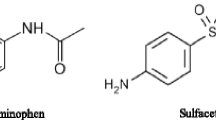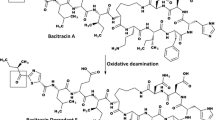Abstract
During pharmaceutical development, the stability of the product is assessed during long-term study. If any stability issues are discovered at this point of the process, it will result in re-formulation and important loss of time and cost. Therefore, important efforts are made in order to select the most stable product. Nevertheless, predicting the stability of the developed product at early stage of the development is challenging. Accelerated stability assessment program (ASAP), based on modified Arrhenius equation and isoconversion approach, appears as an interesting tool allowing to evaluate stability and shelf-life of pharmaceutical product in a short period of time. Nevertheless, few studies using these approaches are published in the literature, and the majority concern small drug molecules. Here, this approach was applied on a small drug molecule, ascorbic acid (AA), and on a cyclic hexapeptide named cFEE. AA and cFEE have been exposed to various temperatures for a maximum of 3 weeks, and then analyzed by capillary electrophoresis coupled to UV detection (CZE-UV) for AA or LC–MS for cFEE. The level of major degradation products was used to build ASAP models and predict the stability of both compounds. Comparison between predicted and long-term data were found accurate for both compounds undergoing two different degradation pathways (oxidation and hydrolysis), confirming the real interest of accelerated predicting stability approach for consistent determination of long-term stability shelf-life of pharmaceutical products.






Similar content being viewed by others
References
ICH Q1A(R2) : Stability testing of new drug substances and products. International Conference On Harmonisation Of Technical Requirements For Registration Of Pharmaceuticals For Human Use. 2003.
Waterman KC, Adami RC. Accelerated aging: prediction of chemical stability of pharmaceuticals. Int J Pharm. 2005;293(1–2):101–25. https://doi.org/10.1016/j.ijpharm.2004.12.013.
Blessy M, Patel RD, Prajapati PN, Agrawal YK. Development of forced degradation and stability indicating studies of drugs-A review. J Pharm Anal. 2014;4(3):159–65. https://doi.org/10.1016/j.jpha.2013.09.003.
Narang AS, Desai D, Badawy S. Physicochemical interactions in solid dosage forms. Pharm Res. 2012;29(10):2635–8. https://doi.org/10.1007/s11095-012-0867-5.
Qiu F, Scrivens G. Accelerated predictive stability. In: Qiu F, Scrivens G, editors. Accelerated predictive stability. Boston: Academic Press; 2018. p. xxiii-xxiv.
Waterman KC, Carella AJ, Gumkowski MJ, Lukulay P, MacDonald BC, Roy MC, et al. Improved protocol and data analysis for accelerated shelf-life estimation of solid dosage forms. Pharm Res. 2007;24(4):780–90. https://doi.org/10.1007/s11095-006-9201-4.
Waterman KC. The application of the accelerated stability assessment program (ASAP) to quality by design (QbD) for drug product stability. AAPS PharmSciTech. 2011;12(3):932–7. https://doi.org/10.1208/s12249-011-9657-3.
Williams HE, Bright J, Roddy E, Poulton A, Cosgrove SD, Turner F, et al. A comparison of drug substance predicted chemical stability with ICH compliant stability studies. Drug Dev Ind Pharm. 2019;45(3):379–86. https://doi.org/10.1080/03639045.2018.1542707.
Tan ZJ, Wu ZS. ASAP Application in suspension, liquid, lyophilized, and controlled-release drug products. Accelerated Predictive Stability2018. p. 323–40.
Waterman R, Lewis J, Waterman KC. Accelerated stability modeling for peptides: a case study with bacitracin. AAPS PharmSciTech. 2017;18(5):1692–8. https://doi.org/10.1208/s12249-016-0635-7.
Li H, Borjas R. ASAP applications in clinical development: prediction of degradation and dissolution performance. Accelerated Predictive Stability2018. p. 369–82.
Colgan ST, Mazzeo T, Orr R. Regulatory expectations and industry practice on stability testing. Accelerated Predictive Stability2018. p. 15–32.
Legrand P, Gahoual R, Benattar R, Toussaint B, Roques C, Mignet N, et al. Comprehensive and quantitative stability study of ascorbic acid using capillary zone electrophoresis with ultraviolet detection and high-resolution tandem mass spectrometry. J Sep Sci. 2020;43(14):2925–35. https://doi.org/10.1002/jssc.202000389.
Rotival R, Bernard M, Henriet T, Fourgeaud M, Fabreguettes JR, Surget E, et al. Comprehensive determination of the cyclic FEE peptide chemical stability in solution. J Pharm Biomed Anal. 2014;89:50–5. https://doi.org/10.1016/j.jpba.2013.10.026.
Scrivens G, Ticehurst M, Swanson JT. Strategies for improving the reliability of accelerated predictive stability (APS) studies. Accelerated Predictive Stability2018. p. 175–206.
Williams H. Predictive stability testing utilizing accelerated stability assessment program (ASAP) studies. Methods for Stability Testing of Pharmaceuticals2018. p. 213–32.
ICH Q3B(R2) : Impurities in new drug products. International Conference On Harmonisation Of Technical Requirements For Registration Of Pharmaceuticals For Human Use. 2003.
Waterman KC, Swanson JT, Lippold BL. A scientific and statistical analysis of accelerated aging for pharmaceuticals. Part 1: accuracy of fitting methods. J Pharm Sci. 2014;103(10):3000–6. doi: https://doi.org/10.1002/jps.24075.
Fu M, Perlman M, Lu Q, Varga C. Pharmaceutical solid-state kinetic stability investigation by using moisture-modified Arrhenius equation and JMP statistical software. J Pharm Biomed Anal. 2015;107:370–7. https://doi.org/10.1016/j.jpba.2015.01.014.
Ueyama E, Tamura K, Mizukawa K, Kano K. Realistic prediction of solid pharmaceutical oxidation products by using a novel forced oxidation system. J Pharm Sci. 2014;103(4):1184–93. https://doi.org/10.1002/jps.23889.
Waterman KC, Adami RC, Alsante KM, Hong J, Landis MS, Lombardo F, et al. Stabilization of pharmaceuticals to oxidative degradation. Pharm Dev Technol. 2002;7(1):1–32. https://doi.org/10.1081/pdt-120002237.
Acknowledgements
The authors would like to thank the Pr Jean-Philippe Wolf for kindly providing us with the hexapeptide cFEE.
Author information
Authors and Affiliations
Contributions
Pauline Legrand: Analysis, investigation, methodology, validation, and writing: original draft.
Rabah Gahoual: Investigation, supervision, and writing: review and editing
Pascal Houzé: Resources, supervision, and writing: review and editing
Sophie Dufaÿ: Methodology, resources, supervision, and writing: review and editing
Corresponding author
Ethics declarations
Conflict of Interest
The authors declare no competing interests.
Additional information
Publisher's Note
Springer Nature remains neutral with regard to jurisdictional claims in published maps and institutional affiliations.
Supplementary Information
Below is the link to the electronic supplementary material.
Rights and permissions
About this article
Cite this article
Legrand, P., Gahoual , R., Houzé, P. et al. Accelerated Stability Assessment Program to Predict Long-term Stability of Drugs: Application to Ascorbic Acid and to a Cyclic Hexapeptide. AAPS PharmSciTech 22, 234 (2021). https://doi.org/10.1208/s12249-021-02121-8
Received:
Accepted:
Published:
DOI: https://doi.org/10.1208/s12249-021-02121-8




